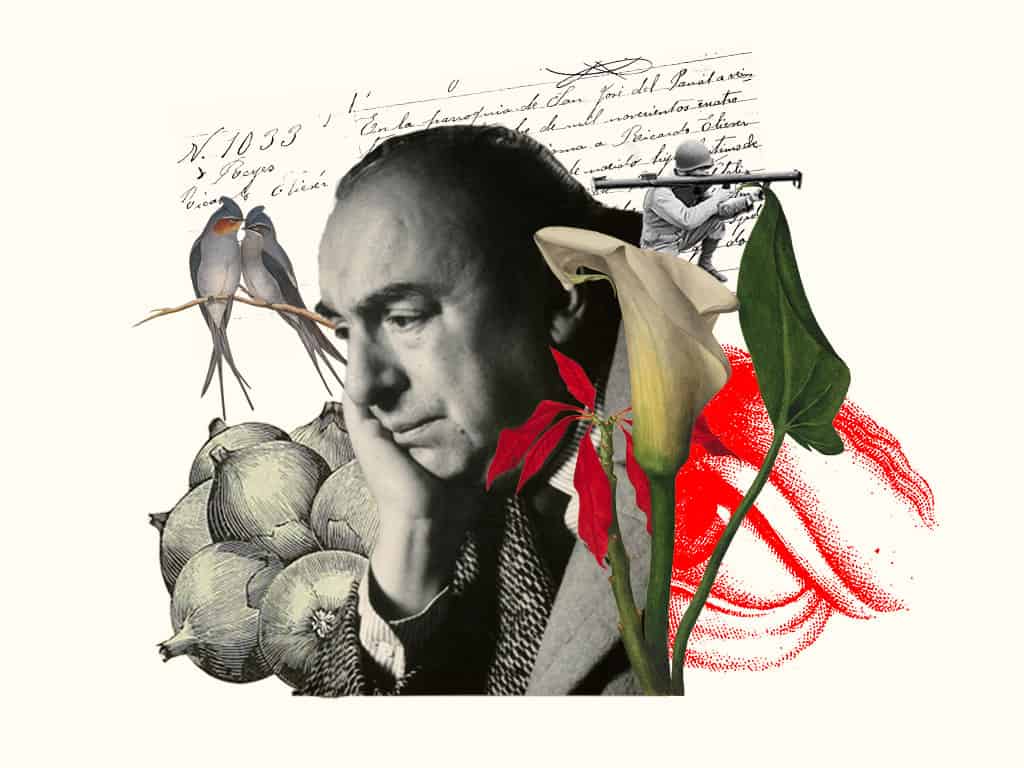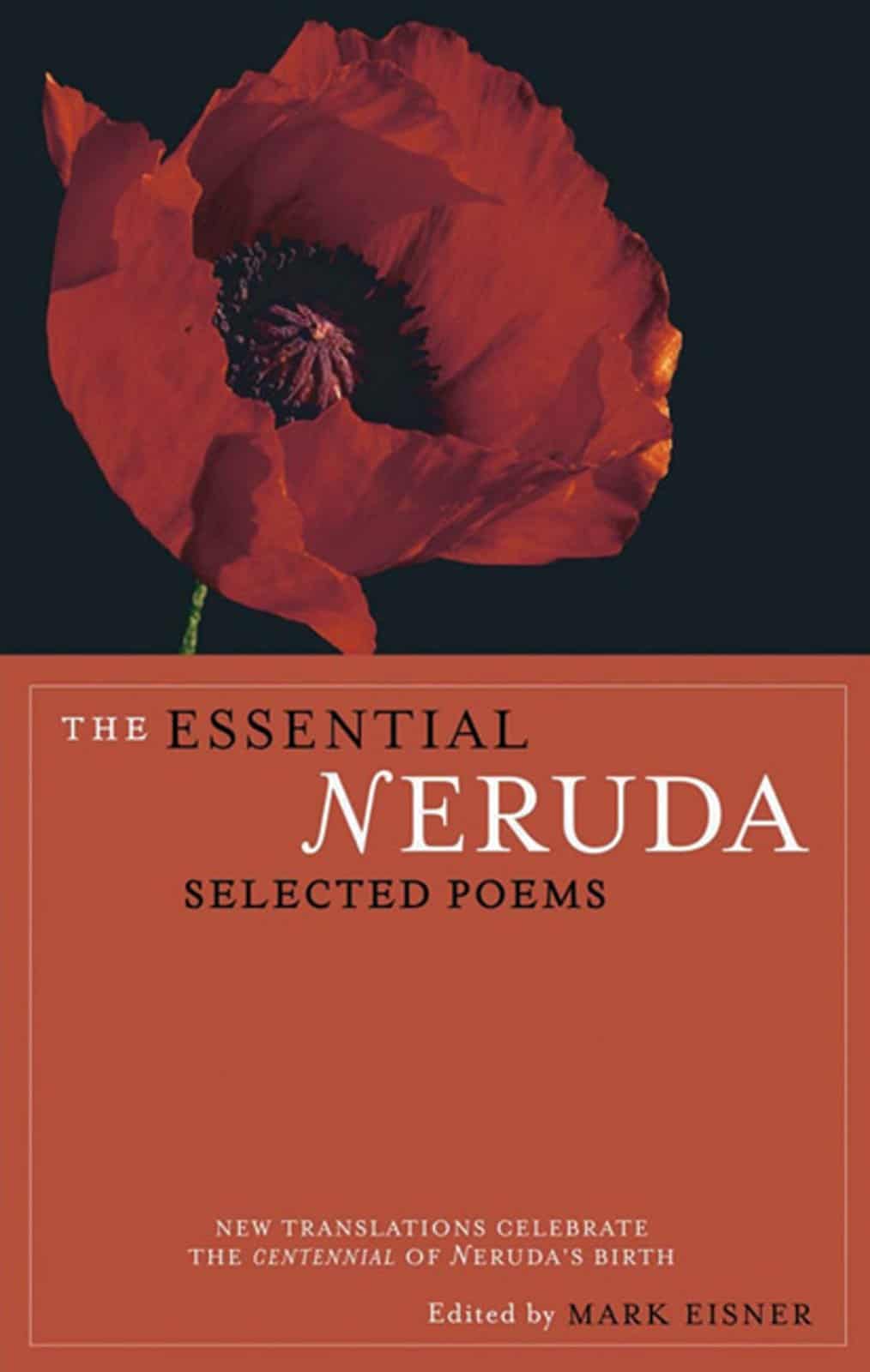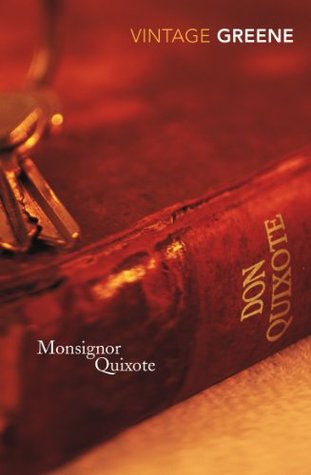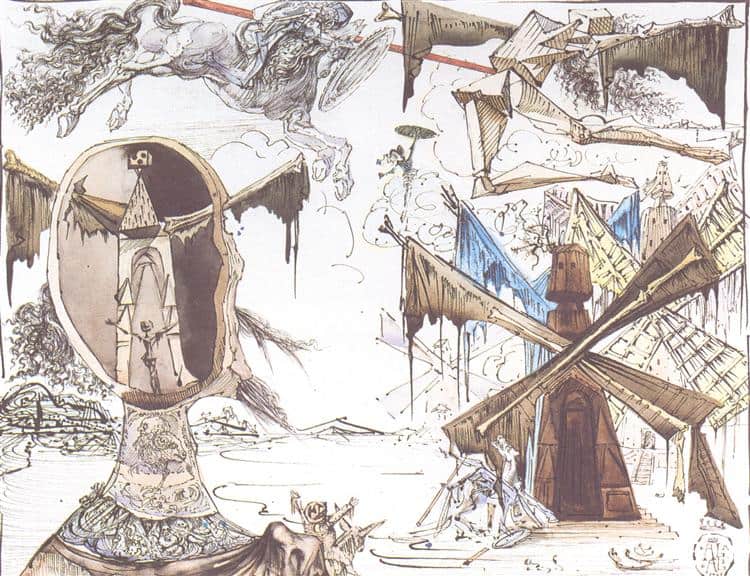I cast my sad nets towards your oceanic eyes.
There, in the highest blaze my solitude lengthens and flames;
Its arms turning like a drowning man’s.
I send out red signals across your absent eyes
That wave like the sea, or the beach by a lighthouse. (Pg. 4-5)
Pablo Neruda

Poems
Pablo Neruda

Mark Eisner, ed. The Essential Neruda (San Francisco: City Lights Publishing, 2004). ISBN-13: 978-0872864283
Pablo Neruda’s poetry covered a wide range of topics from love to politics.
For example, Twenty Love Poems and a Song of Despair was inspired by an unhappy love affair he had. Meanwhile, Spain in Our Hearts chronicled the brutality that existed during the Spanish Civil War, including the execution of his friend Federico Garcia Lorca. His affiliation with Communism stirred controversy, especially as his work focused on people like Joseph Stalin and Fidel Castro.
Why This Text is Transformative?
...Neruda’s poetry also sought to examine philosophical issues that focused on humanity.
Pablo Neruda’s poetry is rich and varied, ranging from the romantic and lonely to the political to direct and humorous. His works seek to examine important issues love to the oppression that he witnessed in his native Chile. Moreover, Neruda’s poetry also sought to examine philosophical issues that focused on humanity. Despite the variety of poetic topics Neruda covered, his poetry has a unity of style that ties his diverse works together.
A Focused Selection
Study Questions

1) What are Neruda’s views on love and loneliness? How do his views correspond to your own views?
2) Neruda used his poetry as a way to communicate his political views. Based on the poetry read, what represents the ideal form of government in Neruda’s view? How does Neruda communicate these ideas through metaphor and imagery?
3) Some commentators have described Neruda as “poet of the people.” Why do some commentators feel that way? Are there people who feel marginalized or excluded in Neruda’s poetry? Why? Do you believe that Neruda represents the “poet of the people”?
Building Bridges
A Recommended Pairing

A wonderful short novel by Graham Greene, Monseigneur Quixote, recasts Cervantes’ magnum opus in a way that captures much of the humor and pathos in a more modern context, as the adventures of a Roman Catholic priest and a communist mayor taking to the road together in Spain during the Franco years. The richly imagined characters and their conversations make it clear that the issues that drive Don Quixote’s idealistic quest are not raised only in books of chivalry. How do we live with a commitment to the ideals of a religious faith or a political ideology which, though noble, may not fit easily with and may have unfortunate consequences in the unforgiving world in which we find ourselves? What difference does friendship make in our lives?
Supplemental Resources

Don Quixote and the Windmills, 1945 - Salvador Dali - WikiArt.org
Don Quixote has been an inspiration for many visual artists. Spanish surrealist Salvador Dali returned to the novel multiple times throughout his long career, creating sketches, paintings, and sculptures of Don Quixote and Sancho, depicting important episodes in the book. A pairing of an episode with one of Dali’s works can lead to a stimulating discussion.
What details do students notice? What do his artistic choices suggest about his interpretation of the characters? To the extent that students are familiar with the story of Don Quixote, it is likely to be as it is filtered through the musical The Man of La Mancha. The musical has its own merits, and is framed by the interesting device of placing Cervantes on stage as a narrator, but of course it is impossible for it to capture much of the complexity of the book – and it alters the ending dramatically. Students may find it interesting to compare the two endings.
Text Mapping
Discipline Mapping
English/Composition Studies
Area Studies
History
Political Science/Government
Page Contributor



